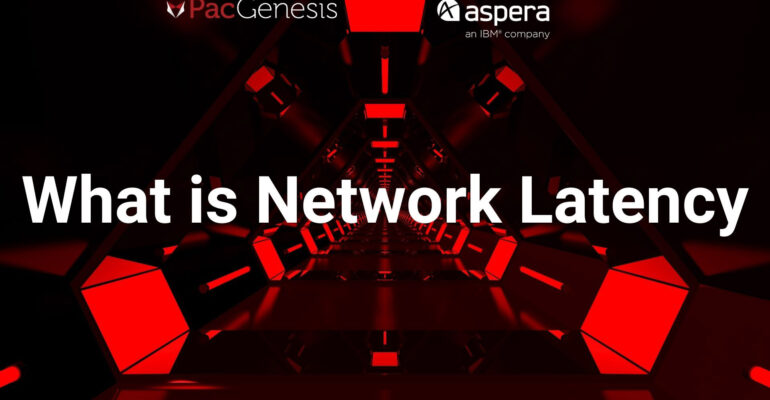What is Network Latency?

When there is a request sent to a server across the internet, there is a series of network reactions involved. A typical path will send the request to a local gateway, which routes the request to a sequence of routers through firewalls and load balancers, and then arrive at the server. This entire path takes time, so each step introduces a delay.
Network latency is the time it takes for a server and a client to complete a request or network data exchange. It’s the time it takes for a request sent from a browser to be processed and returned by the server.
Sections
How to Measure Network Latency
There are two primary ways to measure network latency. One is Time to First Byte (TTFB), which measures how long it takes for a server to receive the first byte of a request. The second is Round Trip Time (RTT), which is the time it takes for the source to send a request and get a reply from the server.
When worried about how network latency affects the performance of applications, then make sure to look to RTT as your measurement. If you’re trying to optimize Internet of Things (IoT) transactions, you should look to TTFB.
What Causes Network Latency?
There are thousands of variables that can affect network latency, but many fall under the following categories:
- Transmission mediums: Data travels across distances in different forms. Every time it switches from one medium to the next, a few extra milliseconds will be added to the total transmission time.
- Payload: The more data that’s transferred, the slower the communication between the client and server.
- Routers: Each hop a packet takes from router to router increases the latency time. Depending on the device, there can be a MAC address and routing table lookups.
- Storage Delays: Delays can occur when a packet is stored or accessed. This results in a delay caused by intermediate devices like switches and bridges.
How to Improve Network Latency
Latency has a direct impact on your business. It can affect how your users will interact with your services, how employees will exchange files and data, and how stakeholders will access that data.
Minimizing network latency is about optimizing all the elements of the network infrastructure. Even when deployed with ultra-high-performance hardware, optimizing software and protocols is the key. To overcome latency challenges with file transfers, companies need software that uses better, more improved protocols that implement flow, congestion controls, and compensation for data loss.
How Aspera Can Help Reduce Latency
IBM Aspera software enables secure movement of data at line speeds, regardless of latency or geographic distance between the sender and receiver. Built on their award-winning FASP protocol, it uses fast file transfer and high-speed solutions to get your content and data to the right people without interrupting processes or deadlines.
This FASP protocol uses a unique, patented approach to enable maximum speed without network saturation. This way, your company has access to a higher degree of reliability with automatic resume and restart from any point of interruption. Aspera enables its users to predict transfer time, regardless of distance or network conditions.
Contact PacGenesis to Learn More
As an IBM Gold Business Partner with over 10 years of experience in the industry, we’ve helped companies find file transfer solutions that do not negatively impact their network latency. We provide professional services for the implementation of all IBM Aspera file transfer solutions and we want to help you. To learn more about IBM Aspera or how PacGenesis can help, contact us today.
To learn more about PacGenesis, follow @PacGenesis on Facebook, Twitter, and LinkedIn, or visit pacgenesis.com.



